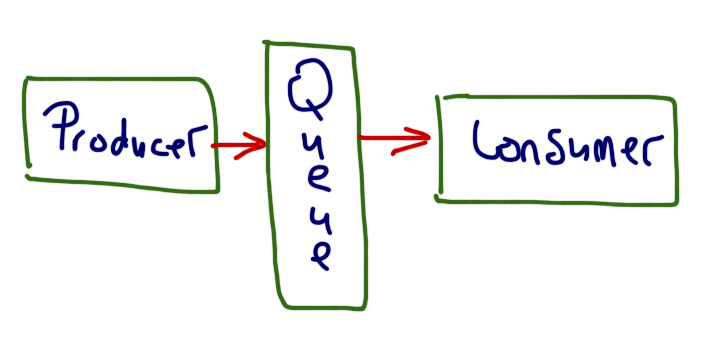
###Goal
The Goal is to manage multiple threads so we can take advantage of multiple cores, so our programs can run faster. The "Producer Consumer Pattern" is to design your system to accommodate this.
At a high level:
###Implementation in Clojure
Typically multithreaded solutions involve mutex locks under the hood. But I cant advise droping down that low level unless you have very good reason. I would venture most problems are better tackled using a higher level abstraction like a ConcurrentQue, List or array.
Clojure and Functional programming are no different in this regard. Sense Clojure can Interopt with the JVM, you could take the solution from the link above and implant it clojure. But their is a more native solution close to hand using a clojure library called core.async
I suggest you take a moment and read at least the rational from the link above. Just to motivate that, here is the opening paragraph:
There comes a time in all good programs when components or subsystems must stop communicating directly with one another. This is often achieved via the introduction of queues between the producers of data and the consumers/processors of that data. This architectural indirection ensures that important decisions can be made with some degree of independence, and leads to systems that are easier to understand, manage, monitor and change, and make better use of computational resources, etc.
With that in mind, i think its easy to see how core.async can help us solve the producer consumer problem, it sounds like it was created directly to deal with it. Here is my minimal example of how this can be done:
;;; we create our channel you can think of it like a que
(def que (async/chan))
;; create a producer that will push some data onto the que
;; you can read async/>! as "push" so (aysnc/>! que x) would be 'push x onto the que.'
;; the important thing to note is that we call our "push x onto que" function inside
;; async/go expression, anything inside it runs concurrently and in another thread.
(defn producer [que x]
(async/go (aysnc/>! que x)))
;; create a consumer that will pull (<!!) data off.
(defn consumer [que]
(+ 1 (async/<!! async/que)))
(defn run []
(producer que 1)
(consumer que))
;; run the program
(run)
;; result => 2
This example is rather lackluster, but it meets our basic requirement. The producer does its work in a different thread then the consumer. We could easily put the consumer in its own thread. We could also create multiple producers and consumers. The options are limitless. If you want to read a better example of the producer consumer problem in clojure look here.
Finally, a word to the wise, don't reach for asynchronsity unless the situation demands it. It comes with a high price in complexity no matter what abstraction you choose.